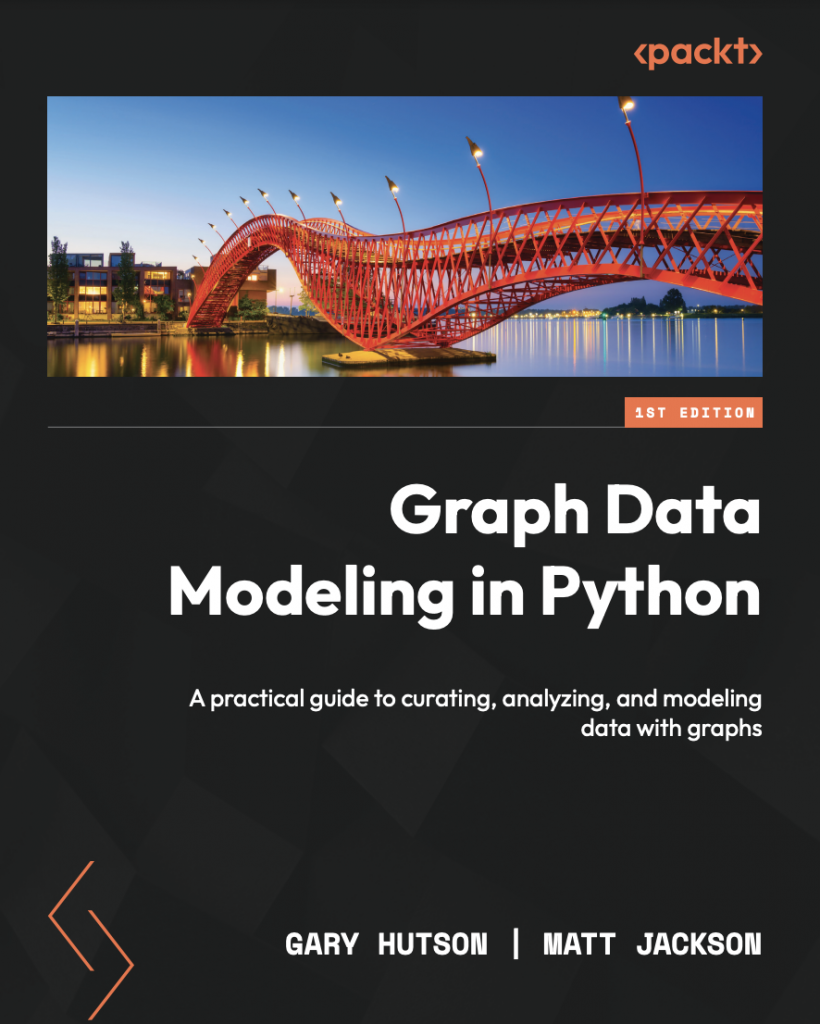
I am so excited to announce that I have a new book (in collaboration with Packt) that has just been launched, written with my co-author, the wonderful Matt Jackson.
This books takes you from a nascent understanding of graph data science methods to a more confident user, all in under 250 pages.
Matt and I have been working on this book for just under a year, and it has been a labour of love. I hope you get a chance to share that love with us?
Where can I pick up a copy?
The book is now widely available from Amazon: https://www.amazon.co.uk/Graph-Data-Modeling-Python-practical/dp/1804618039/ref=sr_1_4?crid=2PFNAL0FWQPFE&keywords=graph+data+modeling&qid=1688137963&sprefix=graph+data+modeling%2Caps%2C72&sr=8-4.
Book Description
Graphs have become increasingly integral to powering the products and services we use in our daily lives, driving social media, online shopping recommendations, and even fraud detection. With this book, you’ll see how a good graph data model can help enhance efficiency and unlock hidden insights through complex network analysis.
Graph Data Modeling in Python will guide you through designing, implementing, and harnessing a variety of graph data models using the popular open source Python libraries NetworkX and igraph. Following practical use cases and examples, you’ll find out how to design optimal graph models capable of supporting a wide range of queries and features. Moreover, you’ll seamlessly transition from traditional relational databases and tabular data to the dynamic world of graph data structures that allow powerful, path-based analyses. As well as learning how to manage a persistent graph database using Neo4j, you’ll also get to grips with adapting your network model to evolving data requirements.
By the end of this book, you’ll be able to transform tabular data into powerful graph data models. In essence, you’ll build your knowledge from beginner to advanced-level practitioner in no time.
What you will learn
Here is a list of what to expect from the book:
- Design graph data models and master schema design best practices
- Work with the NetworkX and igraph frameworks in Python
- Store, query, ingest, and refactor graph data
- Store your graphs in memory with Neo4j
- Build and work with projections and put them into practice
- Refactor schemas and learn tactics for managing an evolved graph data model
- Create recommendation engines, identify hidden groups with community detection, use centrality methods to explain who is connected to who in a network, create knowledge graphs to do meta analysis of medical abstracts, and more
This will take you to have a good understanding of Python, igraph, Neo4j and a number of graph algorithms.
Who is this book for
If you are a data analyst or database developer interested in learning graph databases and how to curate and extract data from them, this is the book for you. It is also beneficial for data scientists and Python developers looking to get started with graph data modeling.
Although knowledge of Python is assumed, no prior experience in graph data modeling theory and techniques is required.
What are the key sections in the book?
The table of contents for the book is shown below:
- Introducing Graphs in the Real World
- Working with Graph Data Models
- Data Model Transformation – Relational to Graph Databases
- Building a Knowledge Graph
- Working with Graph Databases
- Pipeline Development
- Refactoring and Evolving Schemas
- Perfect Projections
- Common Errors and Debugging
If this sounds like it would be interesting to you, then please grab a copy today.
